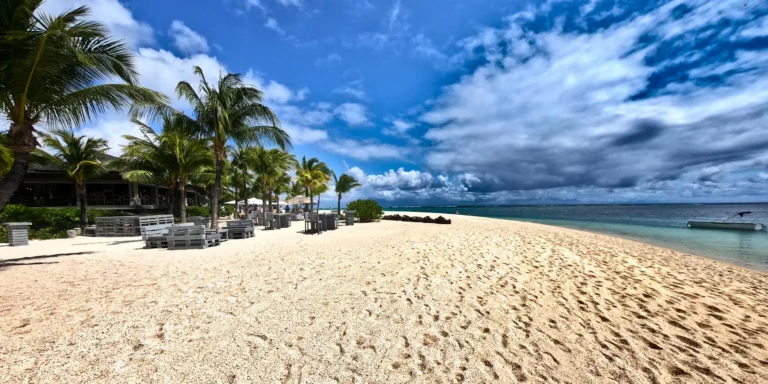
THE 15 BEST BEACHES IN MAURITIUS
From the picturesque Le Morne to the white sands of Ile aux Cerfs, the beaches in Mauritius are a true paradise. Here are the 15 best beaches in Mauritius!

Here’s what you need to know to organize a DIY trip to Mauritius: from where to sleep to how to get around, from payments to safety!
When you think of Mauritius, images of paradisiacal beaches, palm trees, luxury resorts and honeymoons often come to mind.
But is it possible to afford a trip to this fantastic island without necessarily having to opt for an organized tour? The answer is YES!
In our article, we give you some useful tips to organize a fantastic DIY trip to Mauritius!
Not usually opting for luxury resorts, Mauritius had never been a destination we had considered for a low-cost, itinerant trip. However, doing some research, we realised that our perception was wrong.
So, after careful planning, we booked a 10-day trip to discover this paradise. In this article, we will share useful information and tips for traveling to Mauritius, organize your DIY trip and give you answers to the classic questions “Mauritius when to go?” or “How to get to Mauritius?” or “Mauritius where to sleep?”.
Are you looking for ideas for an itinerary to discover Mauritius? 👉 Check out our 10-day itinerary in Mauritius

North Mauritius:
⭐Trip To Try Choice: NORTHERN PEARL LUXURY APARTMENTS
💰Low budget: Lotus Lane Apartments
💰💰Medium budget: Mon Choisy Beach Resort
💰💰💰💰 No limits: LUX* GRAND BAIE RESORT & RESIDENCES
South Mauritius:
⭐Trip To Try Choice: AVA BEACH HOUSE
💰Low budget: Lakaz Metiss Arobaz
💰💰Medium budget: Talamba Blue
💰💰💰💰No limits: LUX* Le Morne Resort
Mauritius is an island located in the Indian Ocean, east of Madagascar, and is a single island, not a group of islands (it’s one island so stop saying ‘I’m going to Mauritius islands’!). It became a republic in the late 1960s, after having been a British colony and having spent several periods under the control of France and Holland. In addition, the island has a history of immigration from countries such as India, which is reflected in the Mauritian Creole language, a fusion of several languages, and the variety of ethnic groups that coexist here.
The capital is Port Louis, located on the west coast of the island, and it takes about an hour and a half by car to cross the entire island from north to south. The island is renowned for its beautiful beaches, but the interior, although less well known, is rich in places to explore and learn about.
If you’re thinking of visiting Mauritius, there are a few things to keep in mind. First, you’ll need your passport to travel there. It has to be valid after your return date, but you’ll need to show your return flight ticket.
If your trip is less than 90 days, you don’t need a tourist visa.
Before you head out, you’ll need to fill out an online form with your info. After you submit it, you’ll get a QR code. Show that to the people at the airport when you get there.
You don’t need any vaccinations to visit Mauritius, but it’s still a good idea to check with your doctor about any recommended vaccinations.
Flights connecting Europe to Mauritius airport are mainly operated by three airlines: Air Mauritius, the island’s national airline, Turkish Airlines and Emirates.
In the case of our DIY trip to Mauritius, we opted for Air Mauritius and had a very positive experience. The flights were on time, the cabin crew was friendly and the food served was of excellent quality. The cost of the ticket was around €600 per person, but you have to consider that September is a low season.
Flights with Air Mauritius make a stopover in London, at Gatwick Airport, and in Paris, at Charles de Gaulle Airport, before continuing directly to the island. Thus, the journey is divided into two segments: a leg to Paris, followed by a flight of about 11 hours from Paris to Mahebourg Airport, the island’s main airport.
On the other hand, Emirates’ route includes a stopover in Dubai, with two legs, and the second one of about 5-6 hours. The choice between these two options depends on your personal preferences and the availability of flights at the time of booking.
When we did our own Mauritius trip, we chose to rent a car to explore the island on our own. In general, the best way to explore the island is to rent a car because the distances to travel could be as much as tens of kilometers.
This argument only applies if you’re planning to explore the whole island.
On the other hand, if you prefer to stay in one area, a scooter is a good option.
We rented the car from a local company, Monet Car Hire. We had a very positive experience with this company! The car was in great shape, the price was reasonable, and we really appreciated not having to put down a deposit.
When we got to the airport, Jean, who works for the company, was there to greet us and drive us to the car. Jean also let us take a short test drive to get used to driving on the left, since the island follows English driving rules.
Then, he took us to a gas station where we refueled and purchased a local SIM card for our phones.
Roads on the island are generally well maintained, but there may be a lack of lighting on side roads at night.
On the main roads, which are similar to highways and have multiple lanes, there is adequate lighting and also clear signage.
We encountered no traffic problems or traffic jams, and driving on the island was relaxed and quiet, with no reckless drivers.
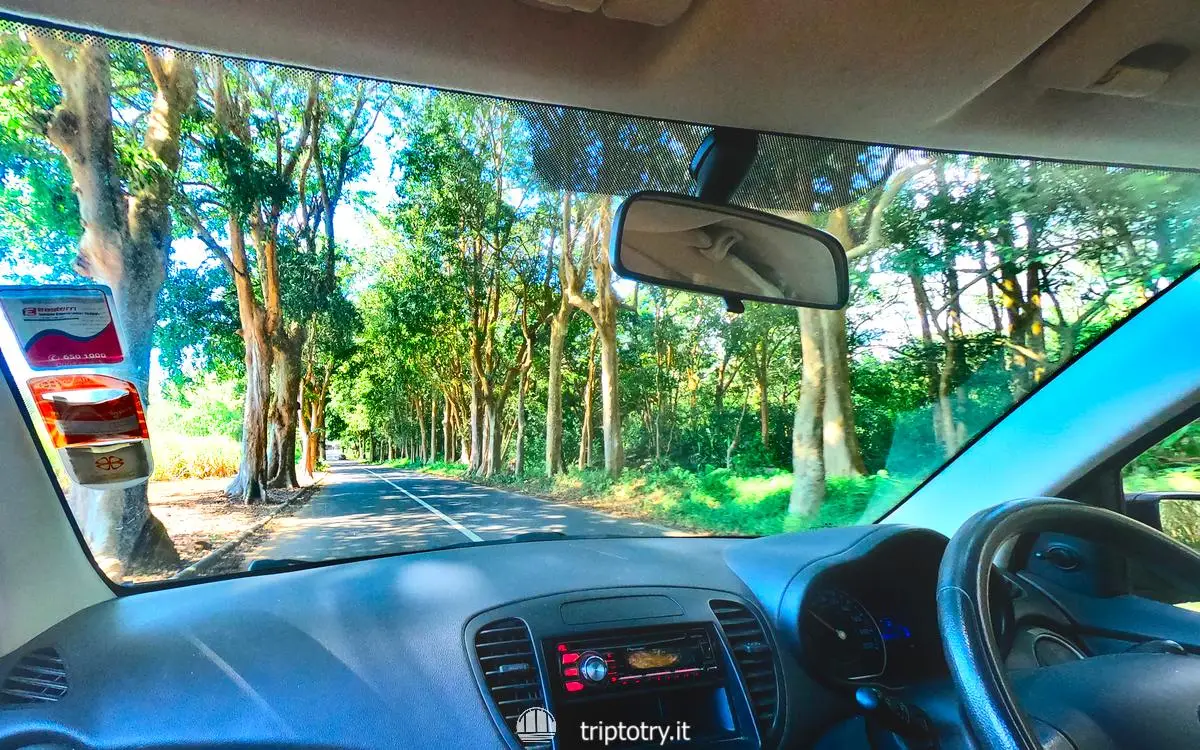
Secondary road in Mauritius

DO YOU NEED AN AIRPORT TRANSFER?
💳 BUY HERE your private airport transfer
What crime? In Mauritius, crime-related problems are extremely rare. Of course, as anywhere in the world, we cannot say that they are totally absent, but the feeling of safety on the island is remarkably high.
During our DIY trip to Mauritius, we never had the impression that we were in a dangerous situation.
The locals are incredibly friendly and sunny.
An interesting aspect of Mauritius is its religious diversity, where Christian churches coexist alongside mosques and Hindu temples. Even more surprising is the fact that, during religious festivals, people of all faiths celebrate together. It is a testimony to the interreligious tolerance and harmony that characterises the island. Incredible huh?
If you don’t believe us, check your embassy website.

From the picturesque Le Morne to the white sands of Ile aux Cerfs, the beaches in Mauritius are a true paradise. Here are the 15 best beaches in Mauritius!
Our DIY trip in Mauritius took place in September, when summer was ending and winter was starting. Keep in mind that winter on the island is pretty mild. During the day and night, the temperatures stay around 25–26 °C. So, it’s a very pleasant climate, quite different from our harsh winters. There might be a few rain showers during the day, but they’re usually pretty short-lived.
When we talked to some of the locals, they told us that in July, which is the peak tourist season, the island is packed, and a lot of the activities might be unavailable because it’s already jam-packed.
So, when should you go to Mauritius? If you can, we suggest planning your DIY trip there in September. By then, the tourist rush has calmed down, and the weather is still very pleasant.
We’ve also heard that there’s a chance of heavy rains and storms in January and February, which could lead to power outages and travel difficulties. So, if you’re planning a trip, try to avoid this time.
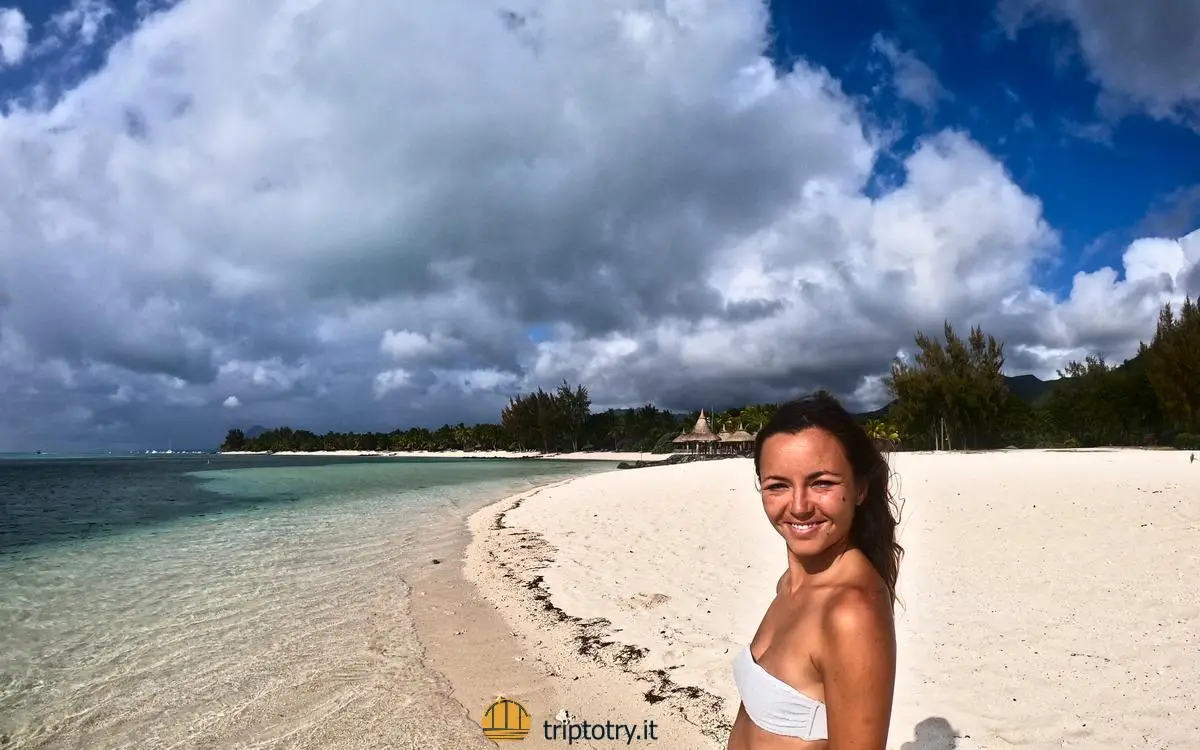
Clouds Passing in Mauritius
The official currency is the Mauritian rupee, with an exchange rate that equates to about 2 euro cents.
During our DIY trip to Mauritius, we exchanged money both at the airport and at a local bank, and the exchange rate at the bank was more advantageous than at the airport.
Many locals accept payment in euros, especially if they are banknotes and not coins. In addition, you can use your credit card almost anywhere on the island, which makes payment convenient and limits the need to have large amounts of cash in Mauritian rupees with you.
The language of Mauritius is Creole, which is a language born from the fusion of the languages spoken by the people who came to this island: French, English, Indian, and even Portuguese. However, most of the terms are derived from French.
In any case, when we made our trip to Mauritius we never had any problems speaking English. Of course, if you also know French it will help!
Health care in Mauritius has a slightly lower standard than in Europe, but not that far behind.
Hospitals are located in the larger cities, such as Port Louis and Mahebourg. In contrast, there are small private clinics in places where there are only tourist facilities.
Therefore, we recommend that you take out ad hoc insurance for your trip, which will cover any medical expenses on the spot, but also those for return and early termination of your trip in case you need to return earlier for special treatment.
We recommend that you purchase a local SIM card when you arrive at the airport so that you have data for navigation, which is especially useful if you are following an itinerary and need a navigator.
There are several phone companies that offer special plans for tourists. Among them, we recommend Emtel, which at a cost of about 15 euros offers you a plan with 200 GB of data, unlimited sms and a call charge (to Mauritian numbers) of 7 cents/minute.
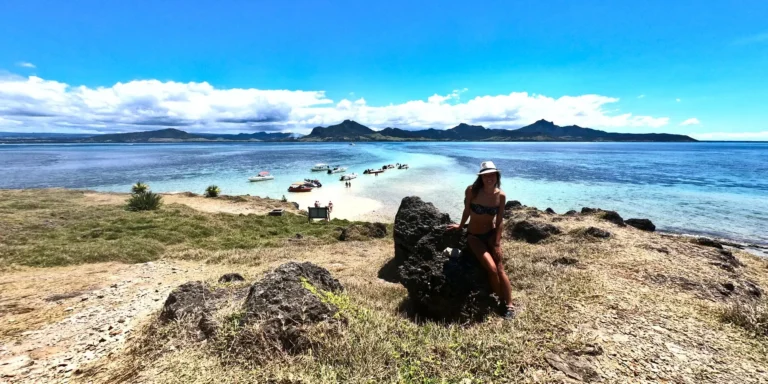
Here is our 10-day itinerary in Mauritius for discovering its enchanting beaches and magnificent hinterland!
As we have already mentioned, in Mauritius we found an unusual and beautiful religious situation at the same time. This is because it is not often that you find countries where various religions coexist peacefully! But not only that, they all share in each other’s holidays.
In fact, there are 3 main religions in Mauritius: Hinduism, Christianity, and the Muslim religion. It happens very often to find Christian churches next to mosques and a few meters ahead a Hindu temple.
All islanders actively participate in the festivities of each religion, and this is one of the aspects that impressed us most about this paradise!
To optimise travel, we chose to book accommodation in the north for the first part and accommodation in the south for the second part. This allowed us to reduce travel time, as the distances between the two ends of the island take about an hour to an hour and a half by car, and to explore more easily the places of interest that were spread over several areas.
In the north we chose the resort of Mont Choisy, while in the south we stayed near Blue Bay.
Both accommodations, booked through Booking.com, turned out to be excellent. They were clean, well maintained and equipped with all the necessary amenities to make our stay enjoyable.
The cost of the accommodations was extremely low, probably because in the low season, we spent around €50 per night per accommodation.
In general, we recommend staying in areas served by shops, supermarkets and restaurants and not isolated, so that you don’t have to use your car for every need.

North Mauritius:
⭐Trip To Try Choice: NORTHERN PEARL LUXURY APARTMENTS
💰Low budget: Lotus Lane Apartments
💰💰Medium budget: Mon Choisy Beach Resort
💰💰💰💰 No limits: LUX* GRAND BAIE RESORT & RESIDENCES
South Mauritius:
⭐Trip To Try Choice: AVA BEACH HOUSE
💰Low budget: Lakaz Metiss Arobaz
💰💰Medium budget: Talamba Blue
💰💰💰💰No limits: LUX* Le Morne Resort
As for meals, during the day we opted for a light lunch with stuffed sandwiches bought in the morning (we recommend the delicious bakery called Le Fournil in Grand Baie). There we could have breakfast with delicious croissants and buy excellent quality baguettes for lunch.
Alternatively, on the beaches, we often found little trucks selling very good quality take-away food.
For dinner, we preferred to dine out, except on one occasion when we opted for take-away food.
Mauritian cuisine is influenced by several cultures, including Asian (with dishes like udon), Indian (with specialities like samosas) and, of course, African.
We found it best to enjoy the local cuisine, as in any foreign place. The time we ate the worst and spent the most was at an international restaurant, while the best dining experience was at a typical restaurant where we enjoyed the traditional Mauritian wedding dish called Seven Curries.
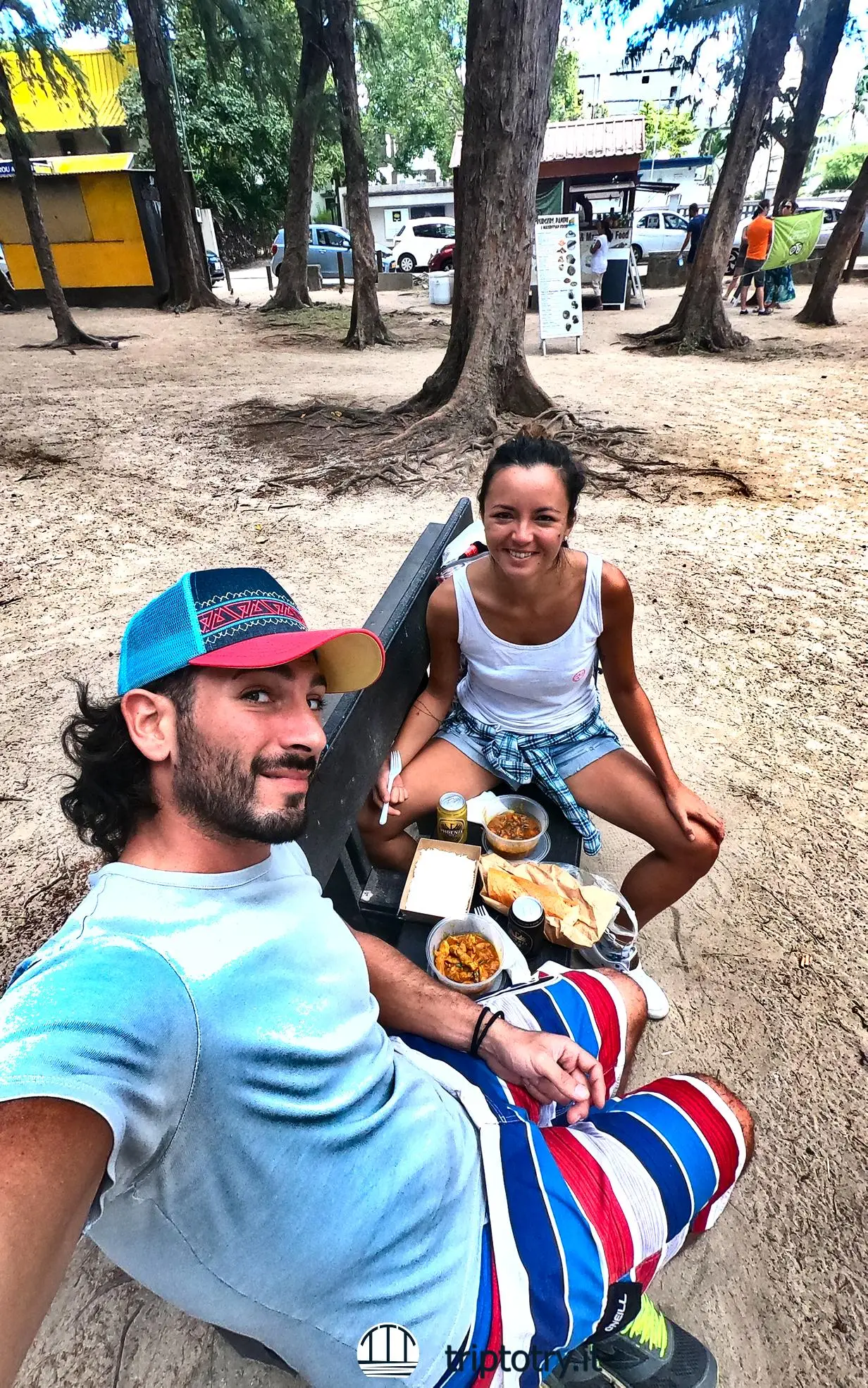
Street food lunch
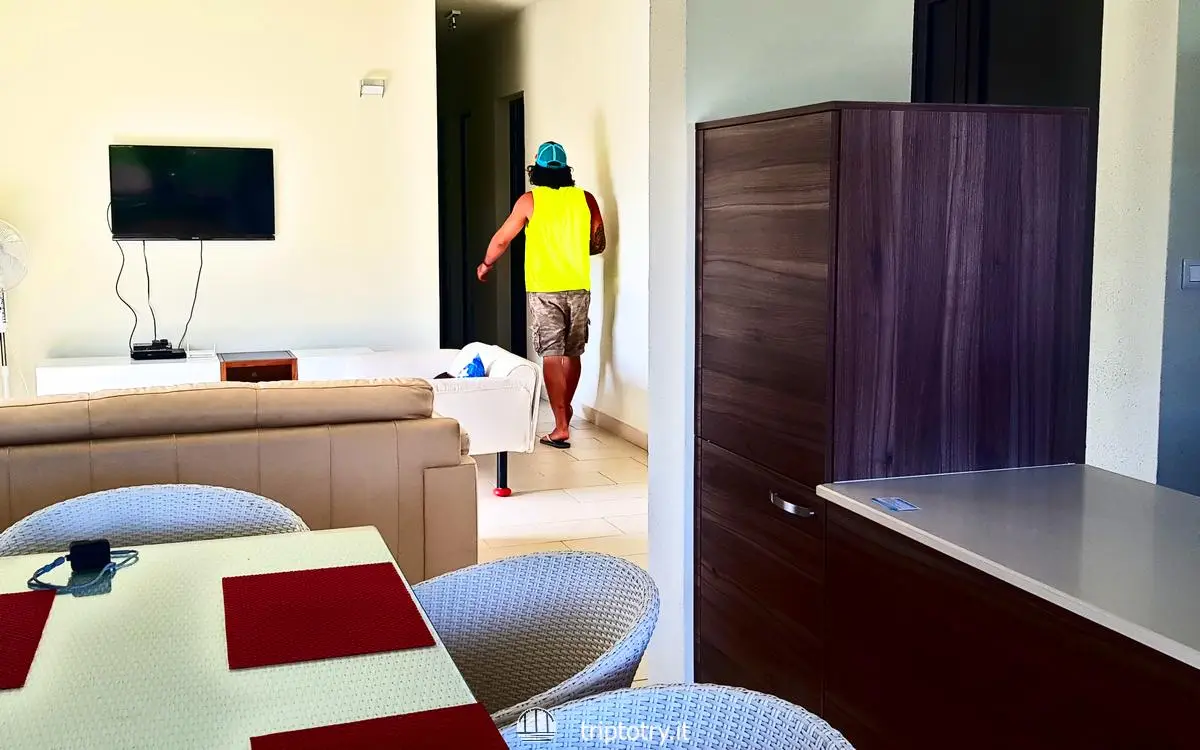
One of our accomodations
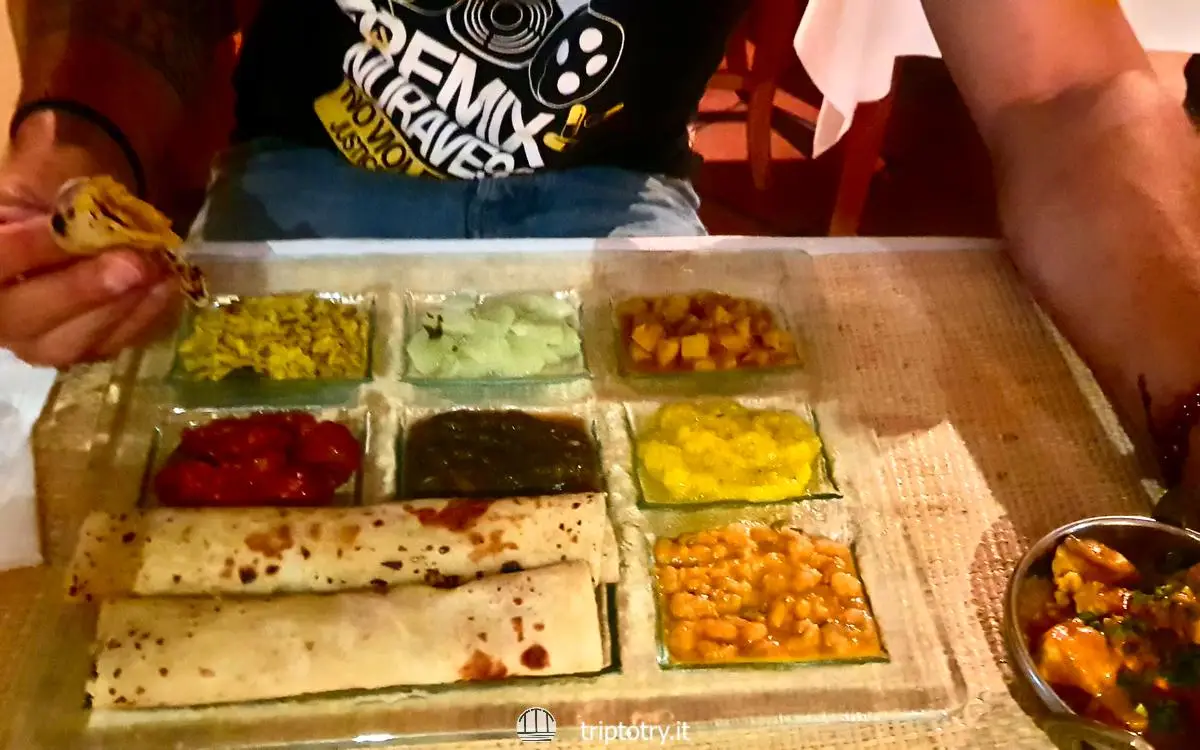
Seven curries
From what we were able to see on our trip to Mauritius, the costs were really low compared to what you might believe.
The cost of living in Mauritius is very low, here are some examples:
The cost of a DIY trip to Mauritius can vary considerably, especially depending on the facilities where you decide to stay, but if you book flights and facilities well in advance, you can take an average cost of €1,500 to €2,000 per person for two weeks as a reference.
DIY Mauritius trip: our conclusions
This trip to Mauritius was one of the first we organized completely in DIY mode. As you can imagine, the “first time” is always the one with the most doubts and uncertainties, and Mauritius, with its safe and relaxed environment, gave us the best experience!
In our opinion, organizing a DIY trip to Mauritius is an opportunity not to be missed. Not only will it save you money, but moreover, it will allow you to fully experience life in Mauritius and explore the whole island!
In fact, Mauritius is not only made up of paradisiacal beaches but is home to incredible places, such as the seven-color lands of Chamarel, the Black River Gorges Natural Park, the Trou aux Cerfs volcano, and so much more!
If you are interested in finding out what places Mauritius hides in its hinterland, we suggest you read our article!
On the other hand, if you want to know what are the 15 most beautiful beaches on the island here 👉 our list!
We hope this article has spurred and enticed you to plan your own DIY Mauritius trip!
As travellers, we only recommend products we really believe in. Some links in this post are affiliate links, which means we earn a small commission if you make a purchase, at no additional cost to you.
Thank you for supporting us and helping us to continue to share our adventures and high quality content!

© Trip To Try - This website idea comes from Barbara and Riccardo and their love for travel to bring home new amazing experience from other cultures and beautiful places around the world. We hope you enjoy our site and our style!
Feel free to Contact Us to share with us your opinion and suggestion!
Privacy - Sitemap